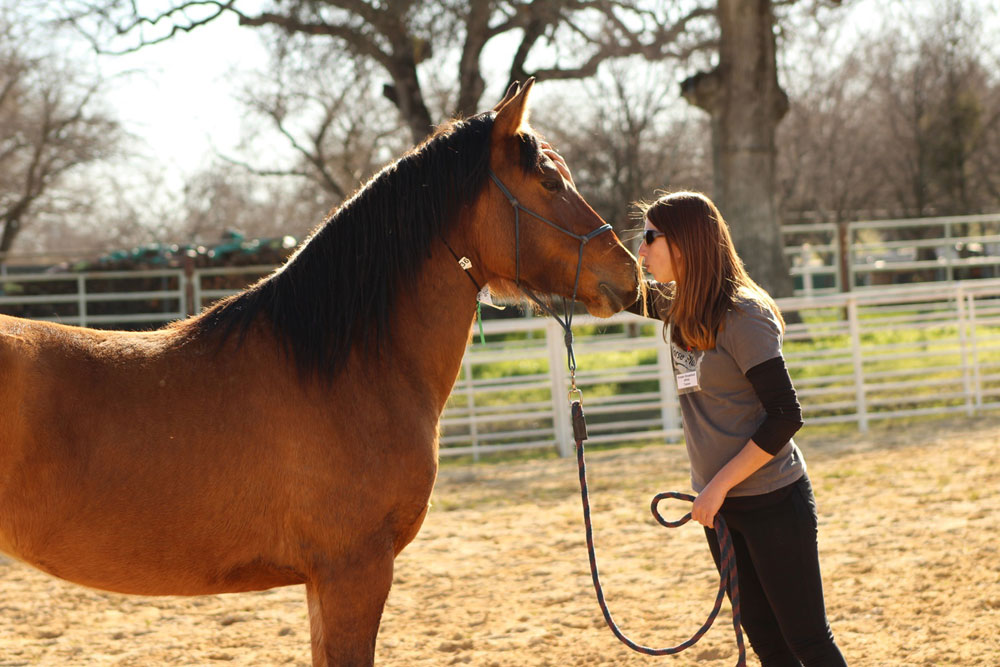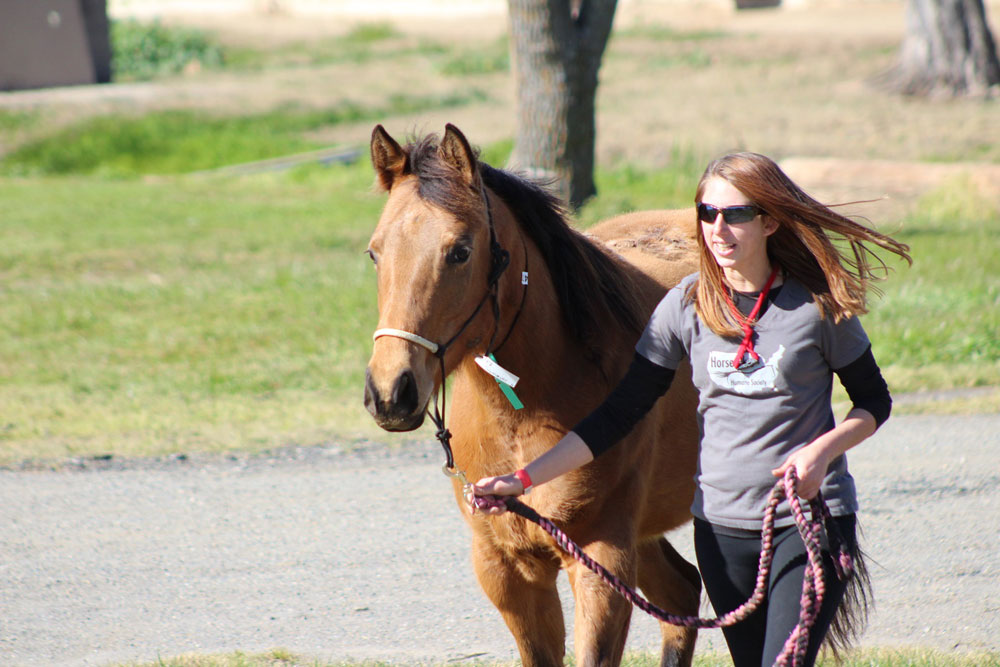Horses must learn basic skills to have foundation for future training and make them safe for their owners. Here is some basic training for rehoming horses.

“People in the Arabian horse industry were familiar with these horses, and they wanted to have them,” Chin remembers. “I don’t think we would have been able to find homes for all of them if the horses hadn’t been so well-known and well-trained.”
Chin was lucky to be able to rehome the animals so easily. Others are not so fortunate. While well-intentioned owners worry about what will happen to their animals if they become unable to properly care for them, many don’t know how to make sure their horses will be attractive to future owners.
Fortunately, horses don’t need a high profile in order to be appealing, says FEI dressage trainer Yvonne Barteau, founder of Horses Without Humans. What they do need is training.
According to Barteau, young horses especially must learn basic skills to establish a foundation for future training and to make them safe for their owners and trainers to handle. Initially the tasks are simple: haltering, leading, and standing for grooming, bathing and routine veterinary and farrier procedures. But they are crucial to the horse’s healthy future.
“In fact, you owe basic training to the horse,” Barteau says. That’s because those skills are directly related to a horse’s basic care.
“We always start with the care aspect—anything that a horse has to be able to do so that you can care for him—because even if the horse isn’t going to be ridden, you still have to take care of him,” says Kristen Breakfield, trainer at the Horse Plus Humane Society.
As a result, horses should also be trained to allow a caretaker to pick up their feet and even to tolerate dental and other oral care. Additionally, basic training should include teaching a horse to load on and off of a trailer with ease.

Basic Training Rehoming Horses – Starting Early
Though horses of any age can be taught these basic skills, the sooner owners begin a horse’s training, the better.
“Training should begin at birth—or at least within a few weeks of birth,” says Jenn Williams, Ph.D., equine behaviorist and founder of the Bluebonnet Equine Humane Society. “The earlier you start training with short training and handling sessions, the easier your horse will be to train.”
But a horse’s basic training should not stop once he has mastered basic ground skills and good manners. He must also learn to yield to a person’s presence in his space and perform ground tasks, such as turning on the forehand or haunches and standing for mounting.
Being able to perform those simple skills can make the difference between a horse finding a good home and falling into other hands.
“At auction, I’ve seen horses that can turn on the forehand or on the haunches bring a price above what a slaughter buyer would pay,” says Tawnee Preisner, Horse Plus Humane Society founder. “You have to plan ahead for your horse.”
Likewise, the horses that are most likely to be rehomed successfully are saddle trained. Once under saddle, they can walk, trot and canter on cue, plus stop, back and turn.
“They don’t have to have a lot of extra skills, but those basics can really help them—even if they haven’t been ridden in years,” says Williams. “It’s easier to restart a horse that had a solid foundation than to start an older horse from scratch.”
Meanwhile, Preisner recommends that owners make their horses as well-rounded as possible by training them to perform more than one discipline.
“For example, don’t just run barrels—take your horse on the trail, as well,” she advises.

Geldings Wanted
Aside from teaching basic skills, there are other equally important things owners can do to make their horses more likely to be successfully rehomed if necessary. Among those is being responsible when it comes to breeding. And that means gelding colts as soon as possible.
“Gelding is critical,” says Preisner. “We see a huge number of stallions at auctions. Not gelding horses is like signing a death warrant for them.”
According to Preisner, horses should be gelded between the ages of 6 months and 1 year.
“A year seems to be a good rule, but it can be done as soon as you see testicles,” she explains.
In addition, Williams says that gelding makes it easier for horses to focus on training and other tasks, gives them a chance to live out on pasture, and affords them the opportunity to have other equine friends. It can make horsekeeping easier for owners, too.
“If you want to keep a stallion, you need to have the knowledge to house and handle a stallion appropriately and the means to properly promote him,” says Williams. “I think few horse owners do.”
Gelding also prevents horses from passing on flaws in conformation or undesirable personality traits.
Basic Training Rehoming Horses – Registration Benefits
But even if they will not be bred, gelded horses should be included in breed registries if they qualify. That’s because registration documents provide a record of a horse’s age and lineage.
“Also, different breeds and bloodlines have different qualities, and there may be some bloodlines that owners want to avoid,” Preisner explains. “On the other hand, someone may be looking for a horse that is related to another horse, and registration documents will tell you that.”
Ultimately, trainers and behaviorists agree that owners must never overlook the importance of getting a horse ready for a future they may not share.
“There are a lot of owners who really neglect their horses’ basic training, and I think they doom their horses to a hard life if they ever are unable to take care of them,” says Williams. “But some owners are amazing and their horses are going to be pretty easy to find homes for if the owner cannot keep them.”
According to Breakfield, it’s the ability to look ahead that serves horses best over the long term, even it that means making difficult decisions.
“For example, an older couple in their 70s and 80s had a 3-year-old pony that they could halter and pet and care for, but had never trained to be ridden, and they knew that they would not be around when he was 10 or 12 years old,” she recalls. “They surrendered the pony so that he could be trained and rehomed.”
That’s why Barteau reminds owners that it’s critical to bring their own good intentions to every training session and to every ride.
“You have to bring your best self to the horses. They have given us so much—we owe it to them.”
Special thanks to Horse Plus Humane Society for providing photos.
This article about basic training tips for rehoming a horse originally appeared in the October 2018 issue of Horse Illustrated magazine. Click here to subscribe!





